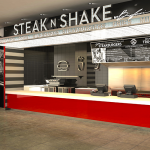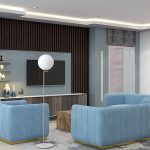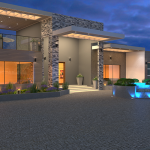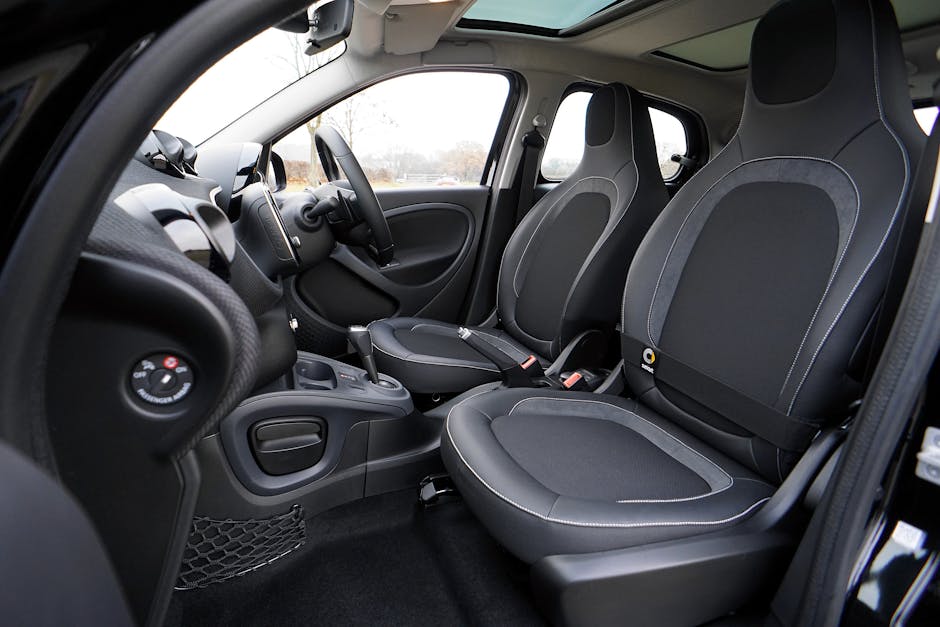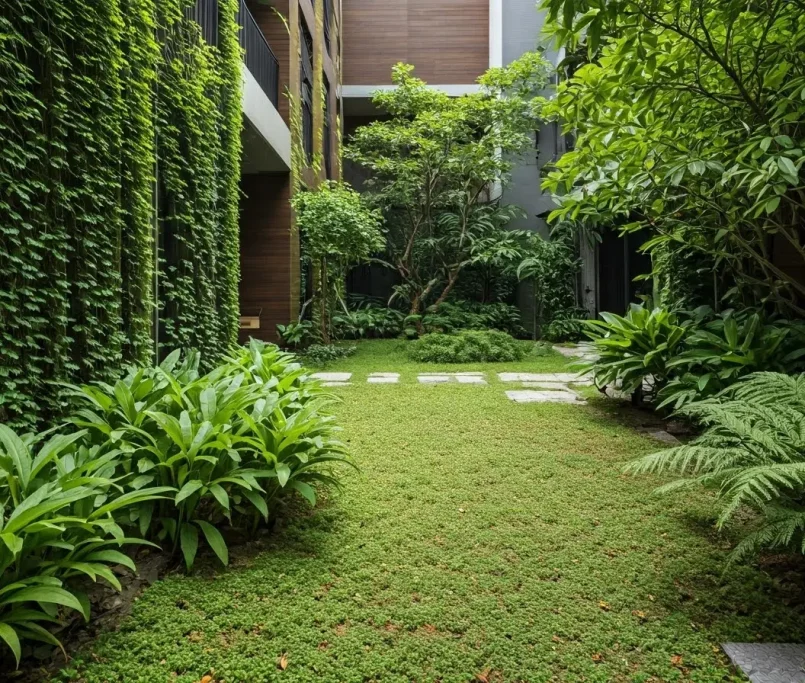The Role of Technology in Crafting Modern Custom Interiors
Introduction to Modern Custom Interiors
When we talk about crafting modern custom interiors, technology plays a crucial role. It’s not just about picking the right sofa or paint color anymore; technology lets us personalize our spaces to fit our unique tastes and needs like never before. Think of it as having a digital toolbox that can help turn any room into a tailor-made sanctuary. From smart home devices that let you control lighting and temperature with the tap of a smartphone, to 3D rendering software that allows you to visualize your space before making any changes, technology is at the heart of modern design. It gives designers and homeowners the power to experiment and innovate, ensuring that every inch of a home or office can be customized to perfection. So, as we delve deeper into the world of modern custom interiors, remember that technology is the magic ingredient that makes it all possible.
The Evolution of Technology in Interior Design
The way we design our homes and workspaces has fundamentally changed, thanks to technology. Gone are the days of flipping through hefty catalogues or relying solely on a designer’s imagination. Today, we use powerful software to create precise, customizable blueprints of interiors. Think about it, with just a few clicks, designers can now modify room layouts, experiment with different color schemes, and even simulate how natural light affects the space at different times of the day. This digital transformation means designs are more accurate, less prone to error, and fully aligned with the client’s vision before any physical work begins. Virtual reality takes this up a notch by allowing you and me to walk through our redesigned space, making changes in real-time. This immersive experience ensures what you see is exactly what you get, eliminating surprises down the line. In simpler terms, technology in interior design means better designs, more efficiency, and personalized spaces that truly feel like ours.
Key Technologies Transforming Custom Interiors
3D design software leads the pack, allowing designers to create precise models of interiors before any physical work begins. It saves time and reduces waste by ensuring everything fits perfectly. Next up, digital fabrication tools like CNC machines let craftsmen cut, carve, and shape materials with incredible accuracy, bringing those 3D designs to life. Laser cutting adds another level of detail, enabling the creation of intricate patterns and textures not possible by hand. Smart home technology integrates seamlessly, offering control over lighting, temperature, and security with a single device or voice command. These technologies transform the way custom interiors are envisioned and executed, making the once impossible, possible.
How Software Tools Simplify the Design Process
In the world of custom interiors, software tools are game changers. They take the complex and make it simple. Think about it like this: with the right app, a designer can turn a blank canvas into a visual feast, all with a few clicks. Software like CAD (Computer-Aided Design) lets designers create precise room layouts and experiment with furniture arrangements without breaking a sweat. Then there’s rendering software, bringing ideas to life in stunning detail before a single hammer swings. And let’s not forget project management platforms. These keep everyone on the same page, from the designer to the contractor, ensuring the vision for your space doesn’t get lost in translation. In essence, these tools cut down on time, mistakes, and yes, even costs. It’s all about making the process smoother so that your dream space can come to life just how you imagine it, only easier.
The Impact of 3D Printing on Custom Furniture
3D printing is changing the game in making custom furniture. It lets designers create unique shapes and pieces that were hard to do before. Now, if you dream it, they can probably 3D print it. This technology cuts down the time it takes to make custom pieces and drops the cost too. So, getting that perfect, snug sofa for your quirky living space is more doable. Unlike traditional methods, 3D printing also means less waste, which is great for the planet. What’s more, the quality and strength of 3D printed furniture are top-notch, matching or even beating traditional methods. This tech isn’t just making custom furniture accessible; it’s revolutionizing how we design our interiors.
Smart Homes and Integrated Systems for Enhanced Living
Smart homes are the future of comfortable living. Imagine walking into your house and the lights turn on to your preference, the thermostat adjusts to your perfect temperature, and your favorite music begins to play—all this without flipping a switch. This isn’t a scene from a sci-fi movie; it’s what integrated systems in smart homes do today. These systems connect devices and appliances in your house so they can communicate with each other and with you, through your smartphone or voice commands. This means you can control your home’s lighting, temperature, entertainment systems, and even security systems remotely or with simple voice commands. But it’s not just about convenience; smart homes are also about efficiency. By optimizing energy use, they can help reduce your utility bills. For example, smart thermostats learn your schedule and adjust heating or cooling to match, ensuring you’re not wasting energy when no one is home. Plus, with real-time monitoring, you can get alerts about any issue in your home, from a water leak to a security breach, allowing you to address problems immediately, often before they escalate. In short, integrating smart technology into your home setup not only makes your life easier but also adds value to your property while saving you money in the long run.
Lighting and Sound: Technological Innovations for Ambiance
Today, technology takes the lead in transforming how our interiors feel and function. Lighting and sound technologies have evolved, giving us the power to craft ambiance with precision. Smart LED lighting systems enable us to adjust brightness, color, and tone to match our mood or the occasion. Imagine shifting your room’s ambiance from a bright, energizing morning light to a soft, relaxing evening glow with just a swipe on your smartphone. It’s not just about utility; it’s about creating experiences.
Then there’s sound technology, a game-changer for making spaces feel welcoming or vibrant. High-quality, hidden sound systems can fill a room with music or the calming sounds of nature without any visible speakers. Smart home integrations allow you to control these audio environments, just like lighting, to match your current vibe.
Beyond just function, these technologies offer a way to personalize space deeply. Whether it’s a cozy reading nook that feels like a warm hug or an energetic home office that boosts your productivity, the right lighting and sound setup can make all the difference. And the beauty of it? You’re in control. With just a few taps, your space adapts to you, not the other way around. This intersection of technology and interior design isn’t just about aesthetics; it’s about creating spaces that respond to our needs and reflect our personalities.
Sustainable Technologies in Custom Interior Materials
When we talk about crafting modern custom interiors, sustainable technologies are at the forefront. These technologies ensure we’re not just creating stylish spaces but also protecting our planet. For starters, innovative materials made from recycled plastics and woods are changing the game. These materials are not just eco-friendly but also durable, making them perfect for long-lasting interior designs. Then, there’s the use of low-VOC (Volatile Organic Compounds) paints and finishes. These are healthier for both the environment and the inhabitants of a space, by releasing fewer pollutants. Sustainable tech also brings advancements in energy-saving lighting and smart thermostats, reducing the carbon footprint of any interior space. By choosing materials and technologies that support sustainability, we’re contributing to a healthier planet while enjoying beautifully crafted interiors. It’s a win-win situation!
Virtual Reality: Visualizing the Future of Design
Virtual Reality (VR) isn’t just for video games anymore; it’s revolutionizing the way we design our spaces. Imagine strapping on a VR headset and stepping into the design of your future home or office, months before the first brick is laid. That’s the power of VR in interior design. You don’t have to rely on imagination or 2D blueprints. With VR, designers can create immersive 3D models that let you walk through your future space. You can experience how the light filters through the windows in the morning or how spacious the living room feels. This isn’t just futuristic talk; it’s happening now. Designers use VR to help clients make decisions faster and with confidence, eliminating the guesswork. You can see how different materials, colors, and layouts look and feel, making changes on the fly. It saves time, cuts down on costly errors, and most importantly, ensures that the final space looks and feels exactly as you dreamed. So, when it comes to designing your space, VR is more than a tool; it’s your gateway to the future of personalized design.
Conclusion: The Merge of Technology and Creativity
As we’ve seen, technology and creativity are now inseparable in the crafting of modern custom interiors. This combination not only makes the impossible possible but also elevates the design process to new heights. With tools like 3D printing and virtual reality, designers can experiment with ideas and spaces in ways never before imagined, allowing for more personalized and intricate designs. It’s clear that the future of interior design is bright, with technology acting as a catalyst for unlimited creativity. The merge of technology and creativity ensures that each space is not just unique but also a testament to the possibilities of modern design. So, if you’re looking into customizing your space, embracing this blend will undoubtedly lead to astonishing results.



